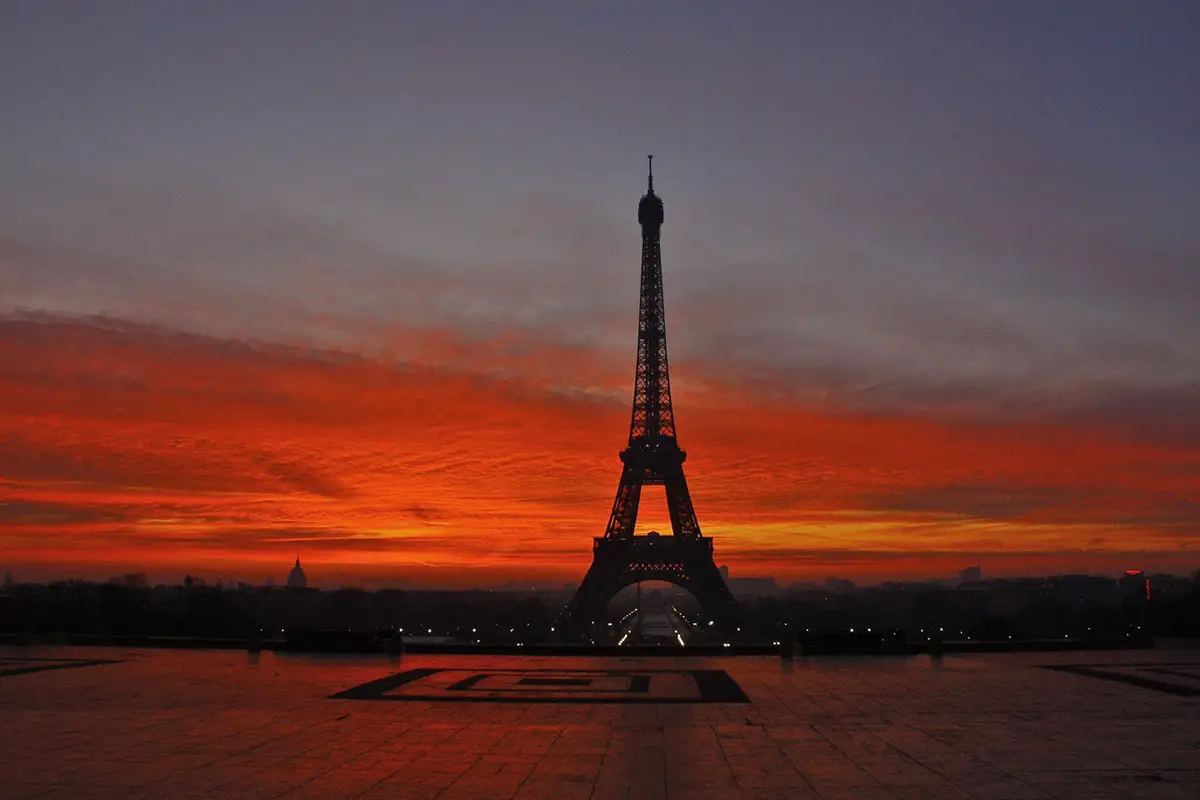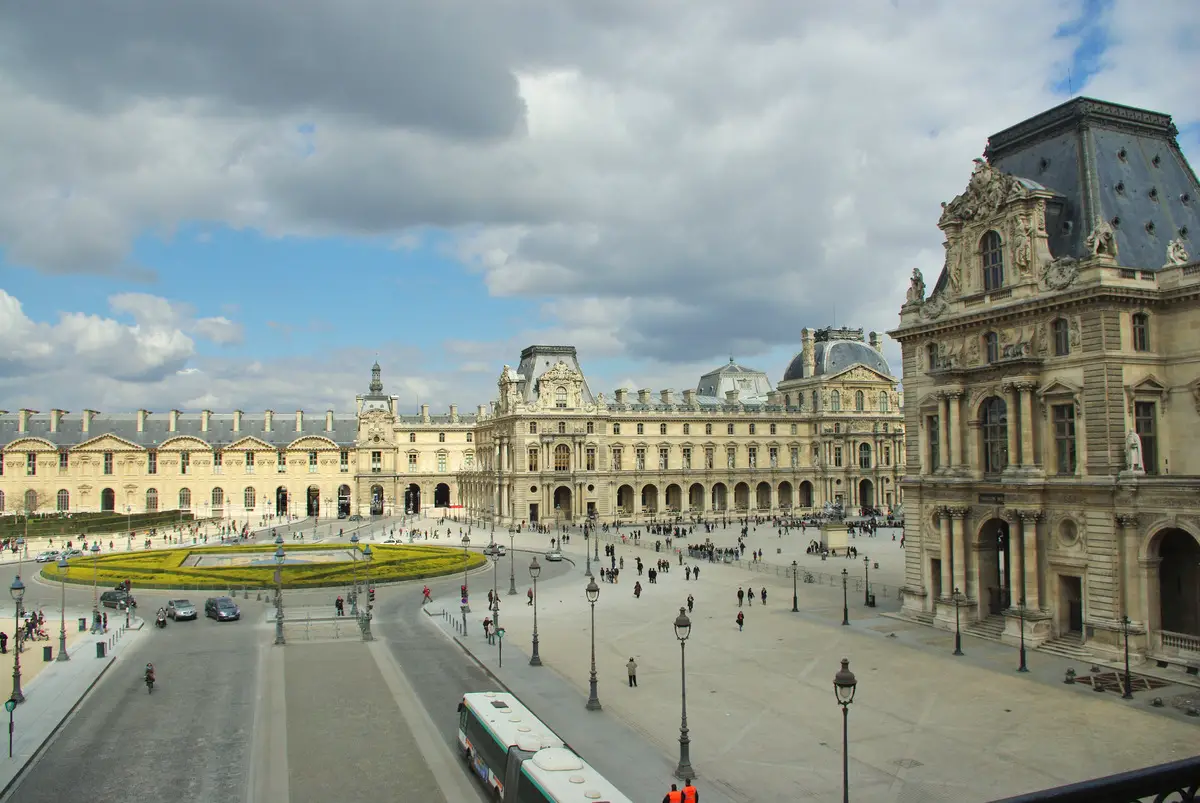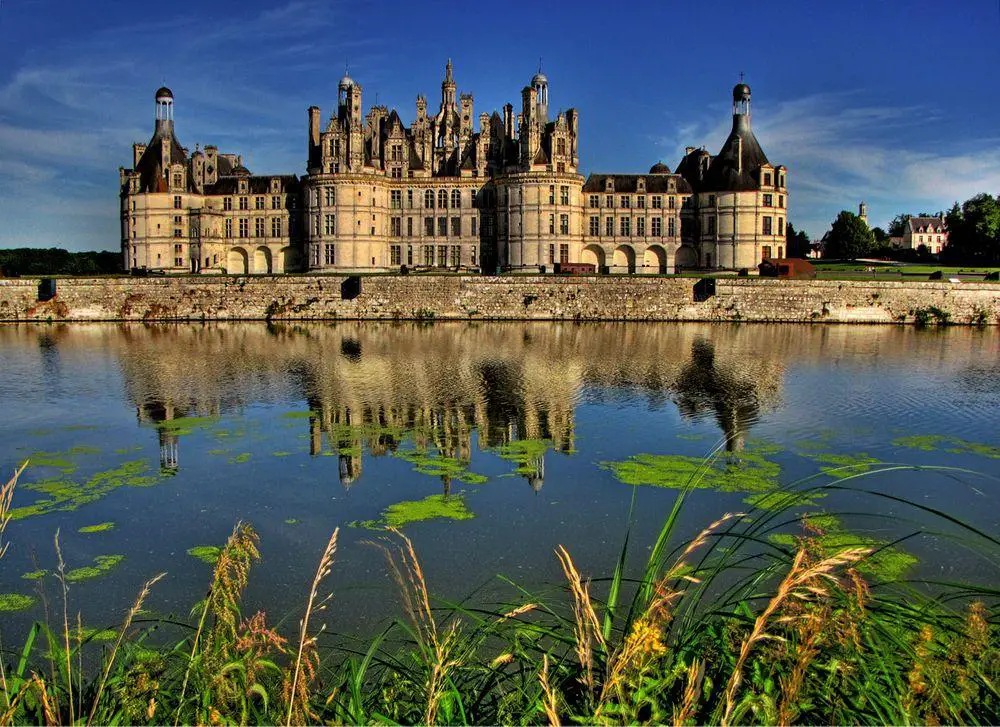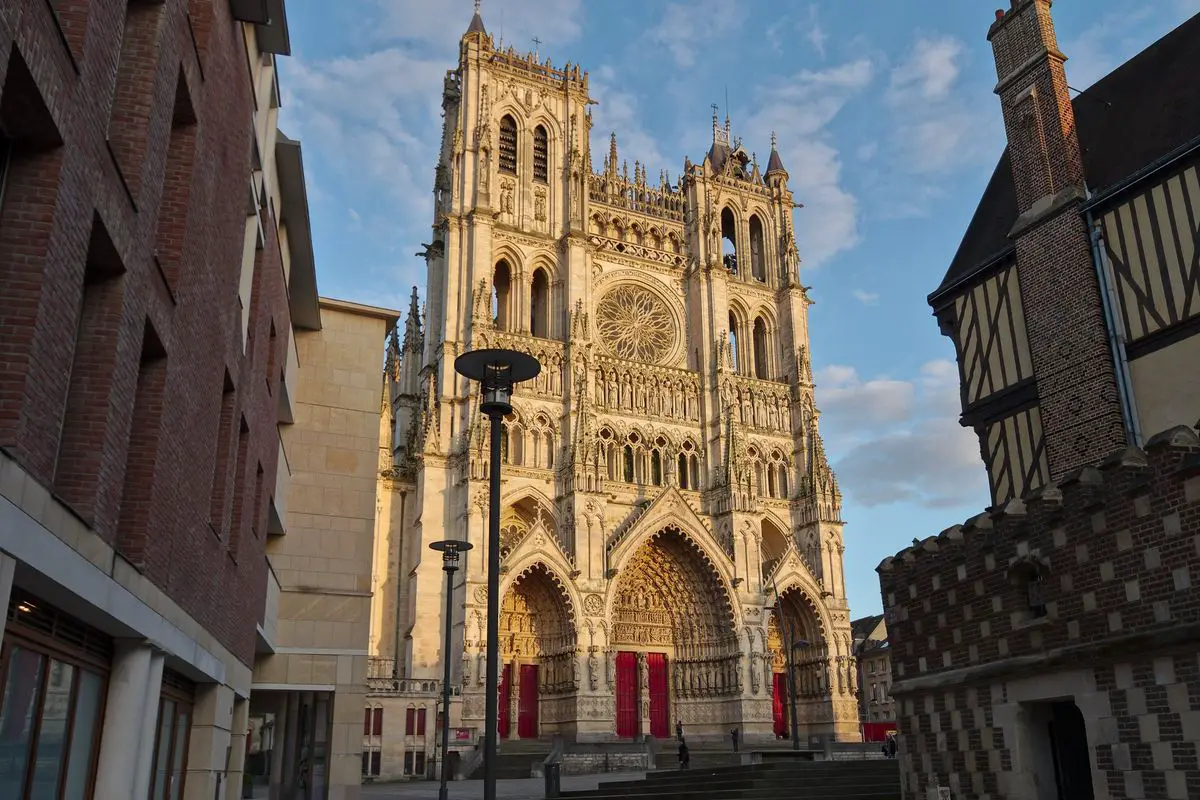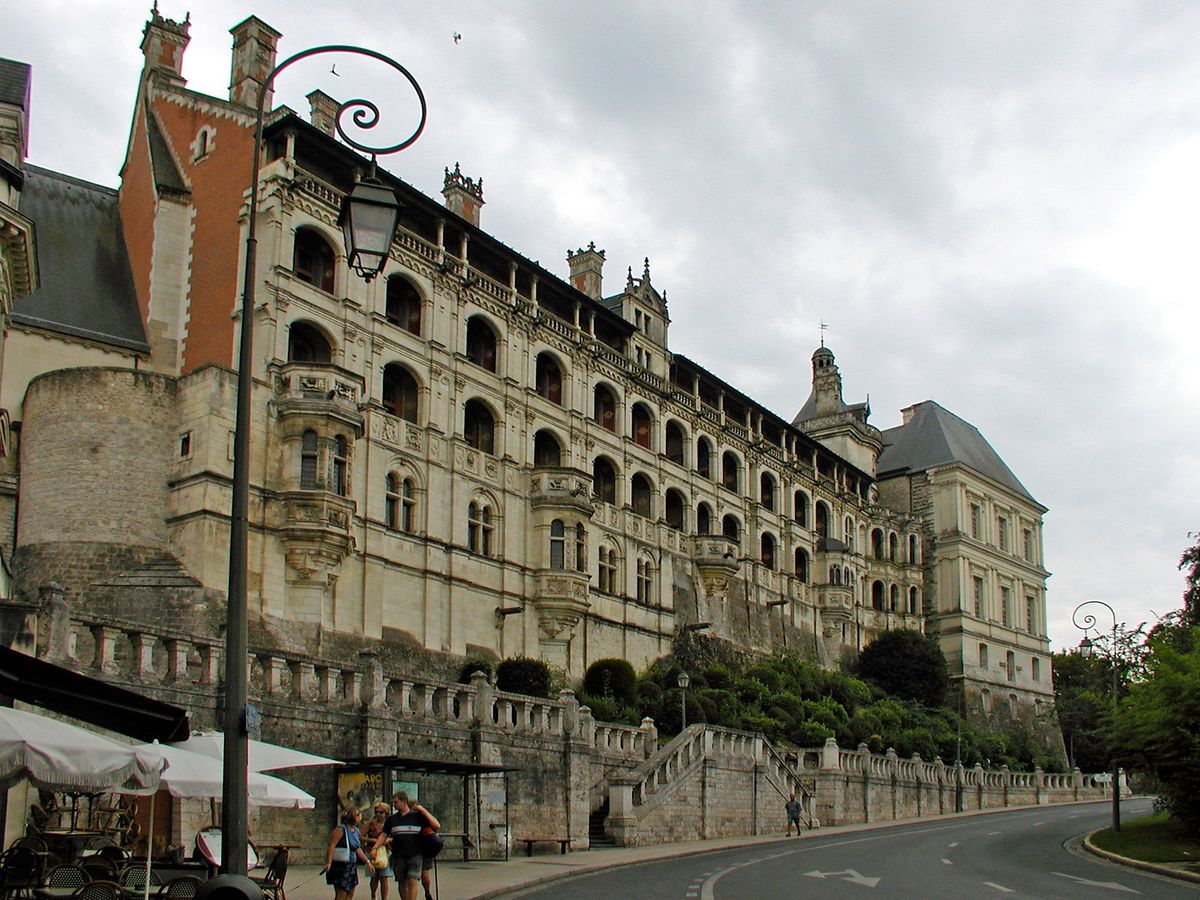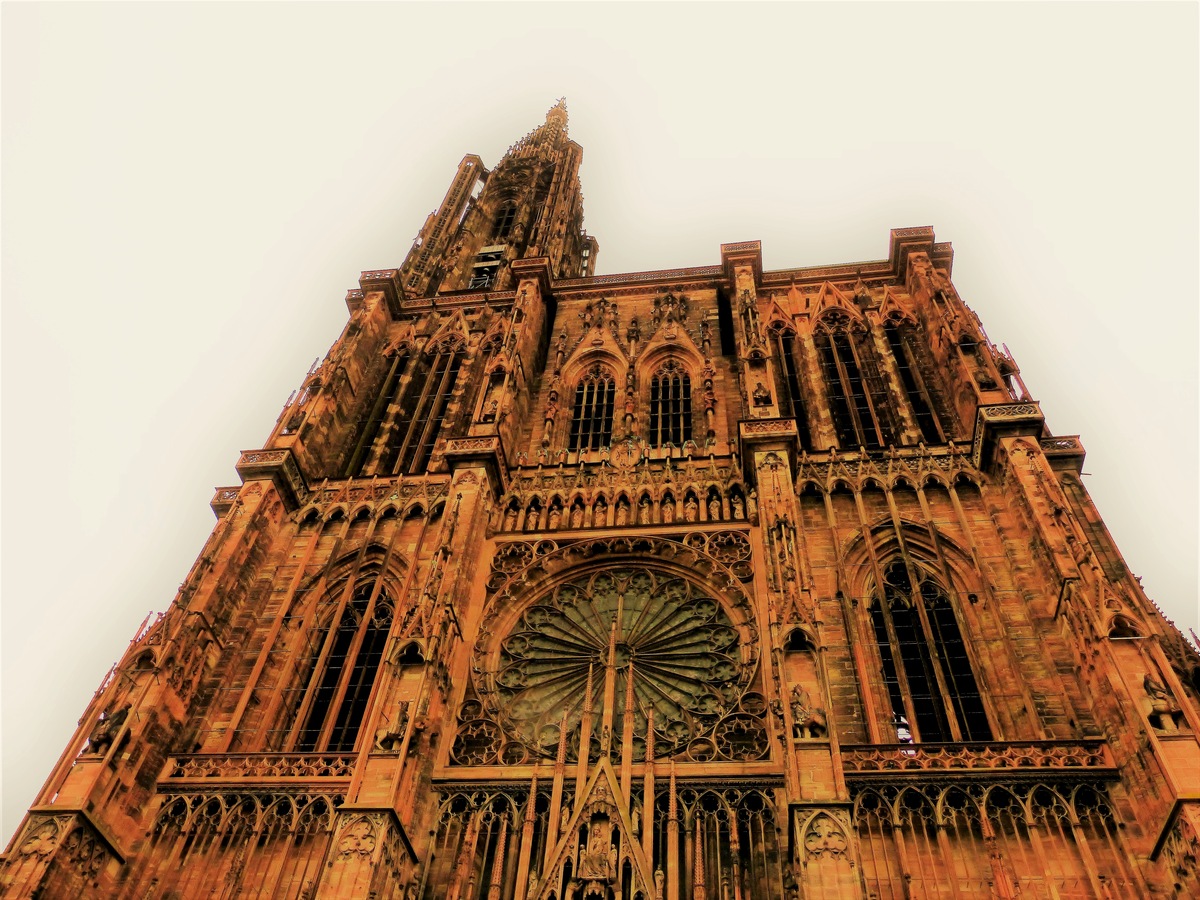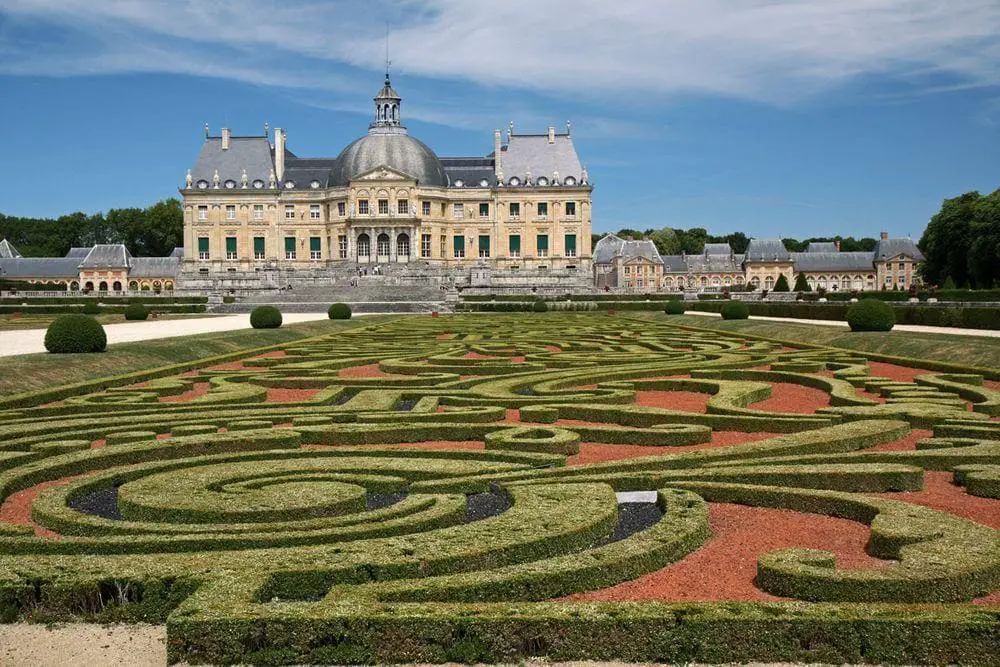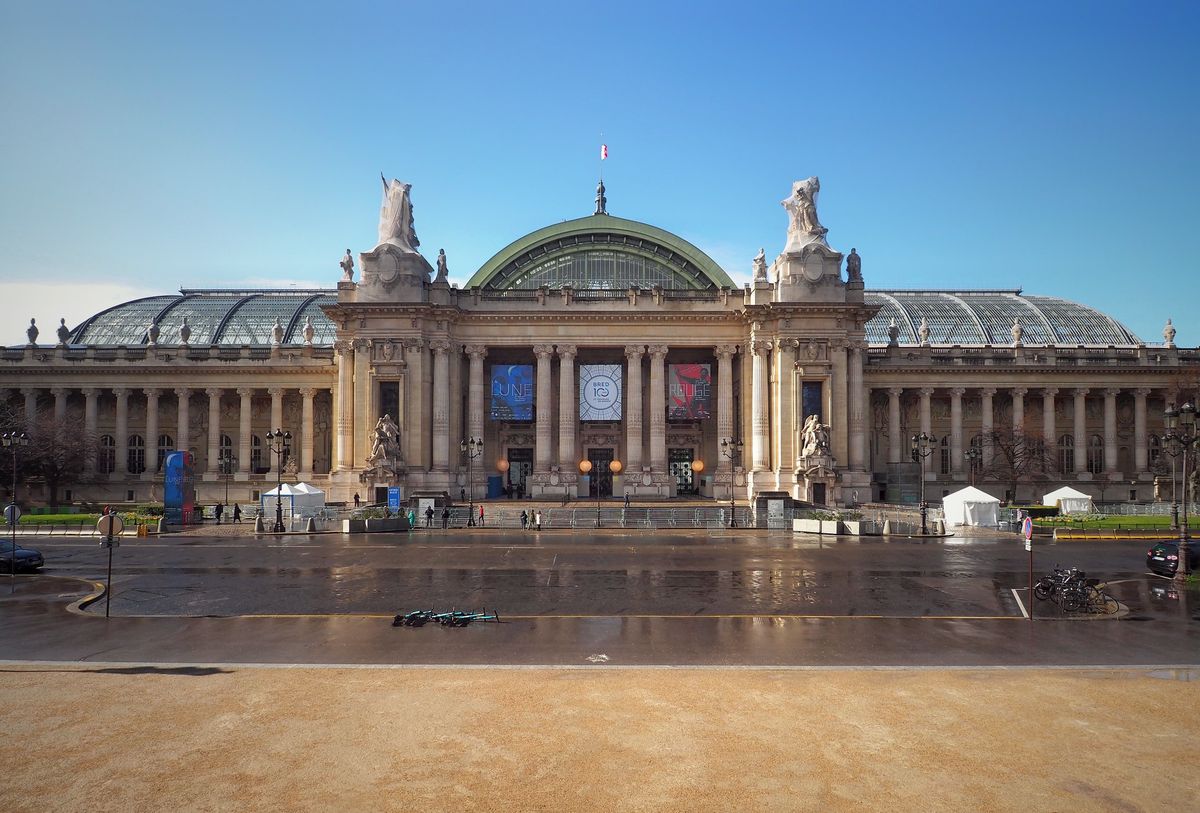Wondermondo 🢖 World 🢖 Wonders of Europe 🢖 Wonders of France
Territory
Wonders of France
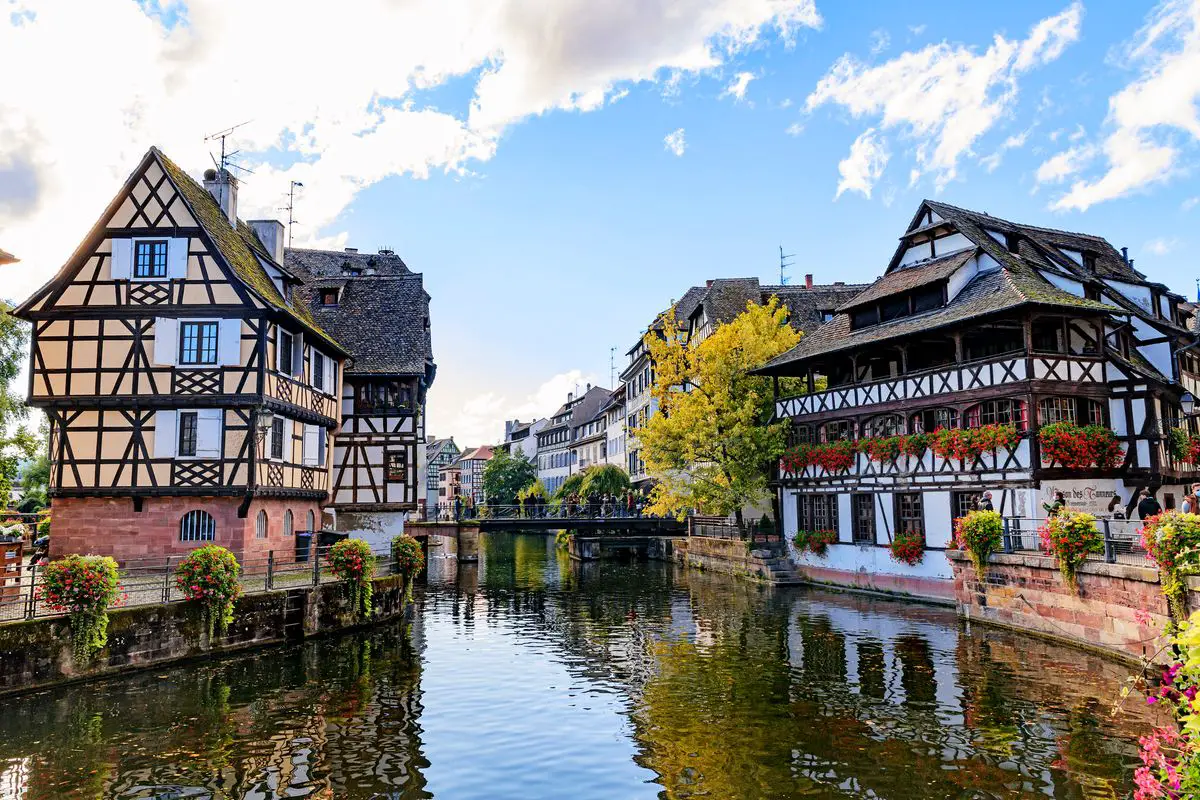
 Highlights
Highlights
France is home to many of the best known landmarks in the world. This country is literally crammed with thousands and thousands of the most diverse attractions. The most amazing wonders of France are:
- Gothic cathedrals. Most people know Notre Dame de Paris or Amiens cathedral, but there are almost countless other magnificent Gothic cathedrals all over the country.
- Renaissance and Baroque palaces. The most magnificent palaces of the world are in France. The best known is Palace of Versailles.
- Medieval towns and cities. Diverse urban planning traditions evolved in France depending on the terrain and available construction materials. Hundreds of very old towns and city centers have been preserved almost unchanged up to this day. Avignon, Mont Saint-Michel, Carcassonne, Aigues-Mortes are among the most interesting.
- Prehistoric cave paintings. Numerous caves in France are adorned with high quality paintings, done tens of thousands years ago. Paintings in such caves as Lascaux, Chauvet, Cosquer serve as a proof – "caveman" knew a lot about true art.
France (mainland) is divided into 13 regions:
List of regions:
- Auvergne-Rhône-Alpes
- Bourgogne-Franche-Comté
- Brittany (Bretagne)
- Centre-Val de Loire
- Corsica
- Grand Est
- Hauts-de-France
- Ile-de-France (Île-de-France)
- Normandy
- Nouvelle-Aquitaine
- Occitanie
- Pays de la Loire
- Provence-Alpes-Côte d’Azur
There are also overseas areas of France:
Overseas regions
Overseas collectivities
Sui generis collectivity
Overseas territory – French Southern and Antarctic Lands
- Adélie Land (reviewed in article about Antarctica)
- Crozet Islands
- Kerguelen Islands
- Saint Paul and Amsterdam Islands
- Scattered Islands
Island possession
Map with the described wonders
If you see this after your page is loaded completely, leafletJS files are missing.
 Top 25 wonders of France
Top 25 wonders of France
Archaeological wonders
Chauvet Cave (Chauvet, Grotte ornée)
Auvergne-Rhône-Alpes
Cave with some of the best examples of prehistoric painting. Contains 420 drawings (paintings and engravings) of animals that have been created since 35,000 BP, Aurignacian period. These drawings belong to the oldest artworks in the world. The quality of the drawings shows that ancient humans already very long ago professed high-quality art. Paintings and engravings are done with different techniques but always of very high quality.
Pont du Gard
Occitanie
One of the most impressive existing Ancient Roman structures is an aqueduct bridge across the Gard River. It represents a part of a 50 km long aqueduct – a 48.8 m high and 274 m long bridge with three stacks of arches. Constructed in the 1st century AD and used for its original purpose until the 9th century. Used as a bridge in medieval times and up to 2000. Built with extreme precision – f.e. it descends 2.5 cm over its 456 m length. Built without mortar – stones are fitting so well that no water is lost.
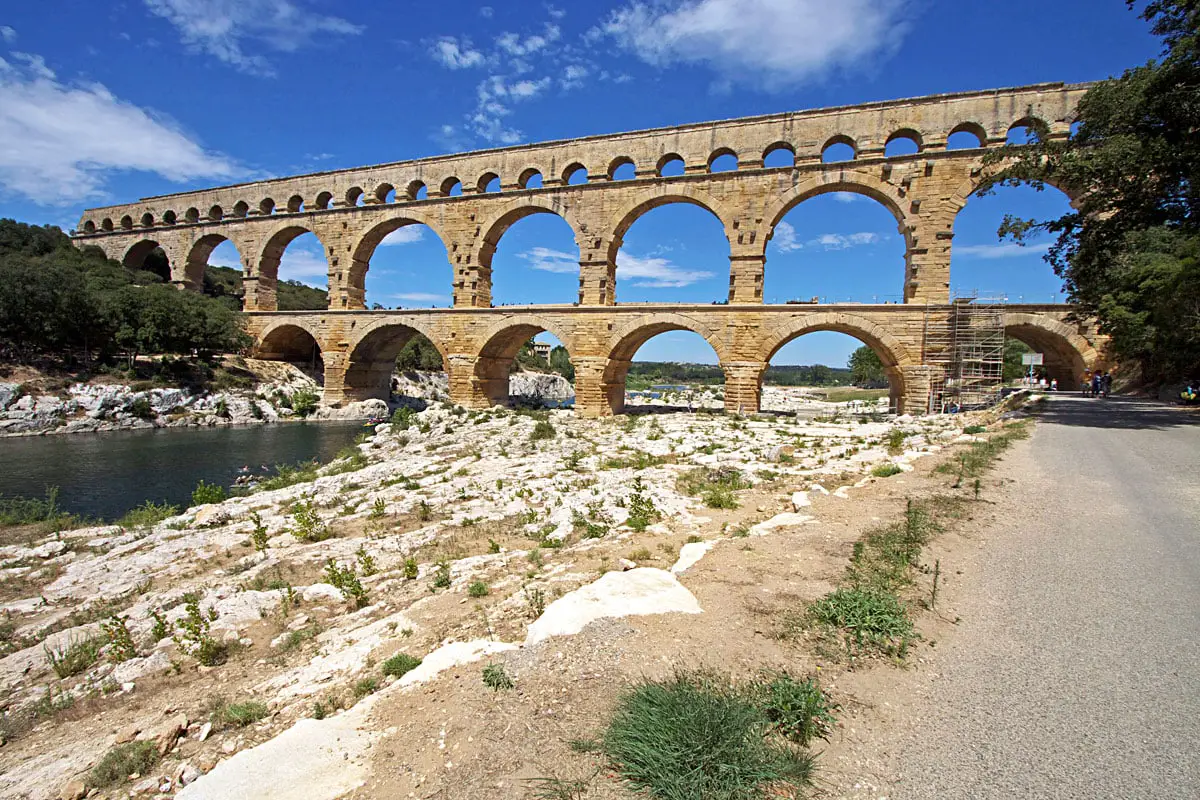
Grotte de Lascaux
Nouvelle-Aquitaine
Group of caves with some of the best-known Palaeolithic polychrome paintings in the world. Paintings were made sometime around 15,300 BC. Here are depicted mostly large animals.
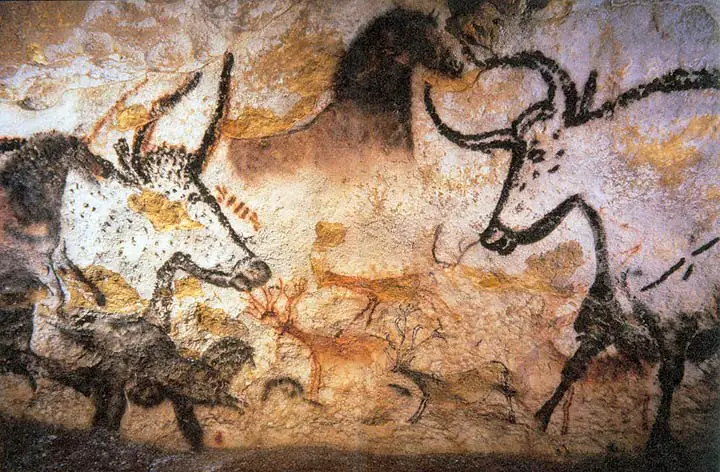
Architecture wonders
Palace of Versailles
Ile-de-France (Île-de-France)
The best known and possibly the most magnificent palace in the world with 700 rooms. Constructed starting from 1661 and served as a royal palace until 1789. This palace brought a new style in many areas of life – architecture, planning, arts, governance, and etiquette – thus the palace represents one of the most important monuments of culture in Europe.
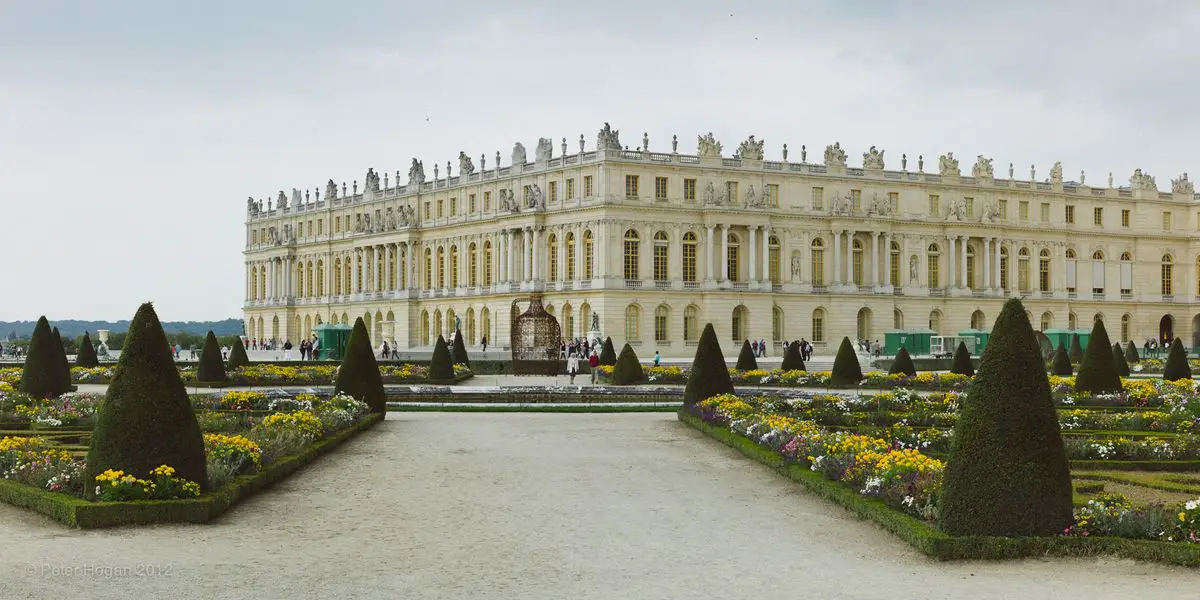
Notre Dame de Paris
Ile-de-France (Île-de-France)
Constructed in 1163 – the late 14th century. One of the most significant Gothic cathedrals and one of the world’s best-known monuments of architecture. One of the first buildings where flying buttresses were used.
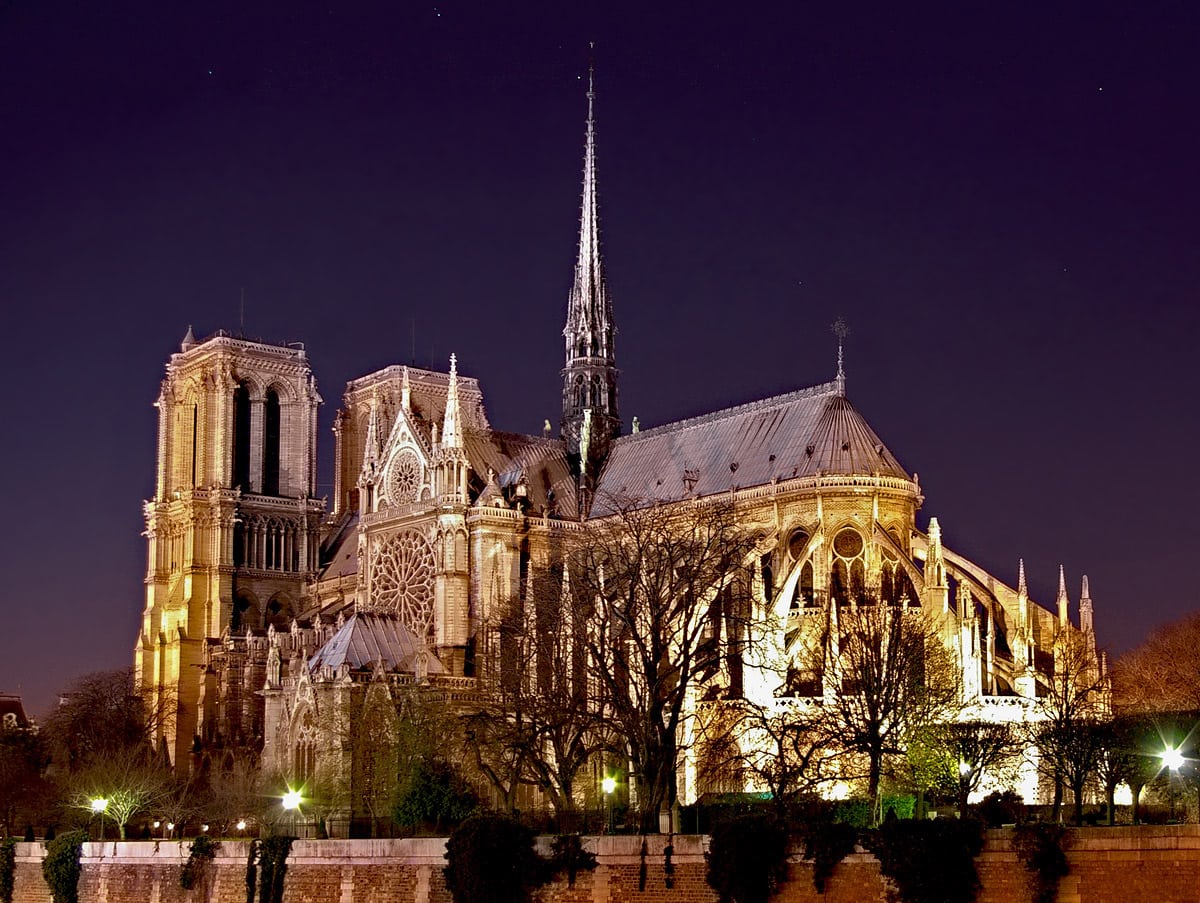
Eiffel Tower
Ile-de-France (Île-de-France)
One of the best-known landmarks in the world, a symbol of Paris and to some extent – the whole of France. This 324 m tall iron lattice tower was built in 1889 and was the tallest man-made structure on Earth until 1930.
Musée du Louvre
Ile-de-France (Île-de-France)
One of the largest museums in the world with more than 35,000 objects exhibited. Many works are among the most important artworks in the world. Located in a palace that was started as a castle in the late 12th century. Gradually extended and now it is one of the largest palaces in the world.
Mont Saint-Michel
Normandy
Unique monument of urban planning – a fortified monastery with a surrounding small town, built on a rocky tidal island. This monastery was established here in the early 8th century. Its buildings were constructed in a Romanesque style, mainly in the 10th – 11th century AD. The island is topped with the massive, Romanesque Mont-Saint-Michel church (11th century).
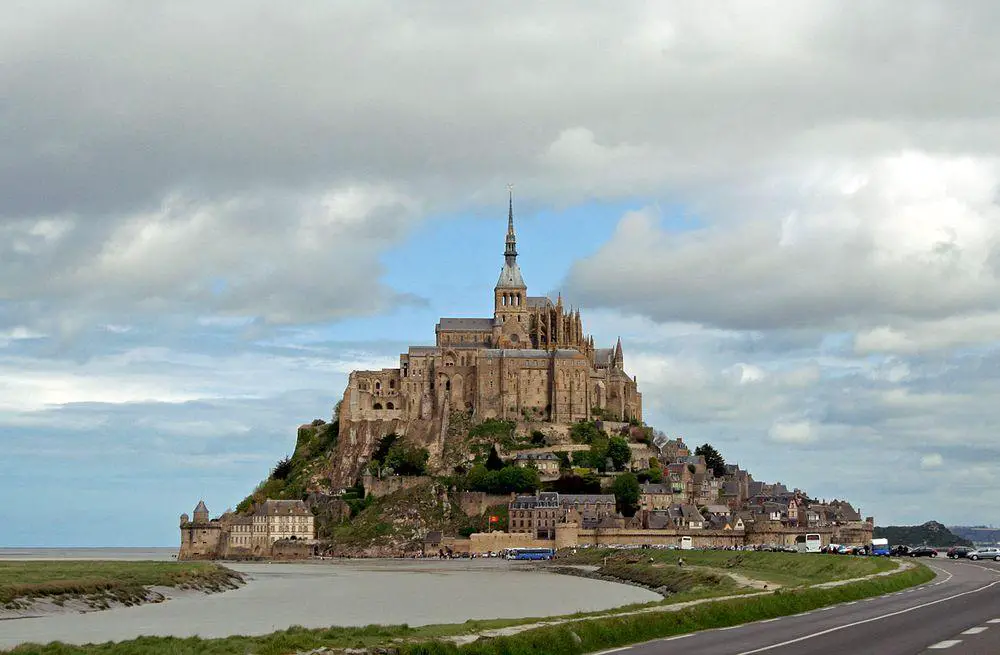
Château de Chambord
Centre-Val de Loire
One of the most iconic Renaissance buildings in the world, melting in its design the French medieval architecture and Italian classical architecture. Constructed in 1519 – 1547. This castle still has fortifications, including a keep and a moat, but it primarily functions as a luxuriant residence. Palace has 440 rooms.
Amiens Cathedral
Hauts-de-France
One of the great Gothic cathedrals of Europe. It has the second tallest nave in France (42,30 m) and a very large interior hall – the largest in medieval Europe. Constructed in 1220 – 1270. Contains an excellent set of Gothic sculptures from the early 13th century. Contains a labyrinth that was installed in 1288. The facade originally was polychrome.
Chartres Cathedral
Centre-Val de Loire
This church belongs to the most impressive Gothic cathedrals in the world and it is also one of the most important pilgrimage sites in Medieval Europe. The current cathedral is mostly built between 1193 and 1250, but a cathedral has been here since the 9th century at least. Preserved in exceptionally good condition, with all the original stained glass. Two spires – 113 and 105 m high. Adorned with hundreds of sculptures.
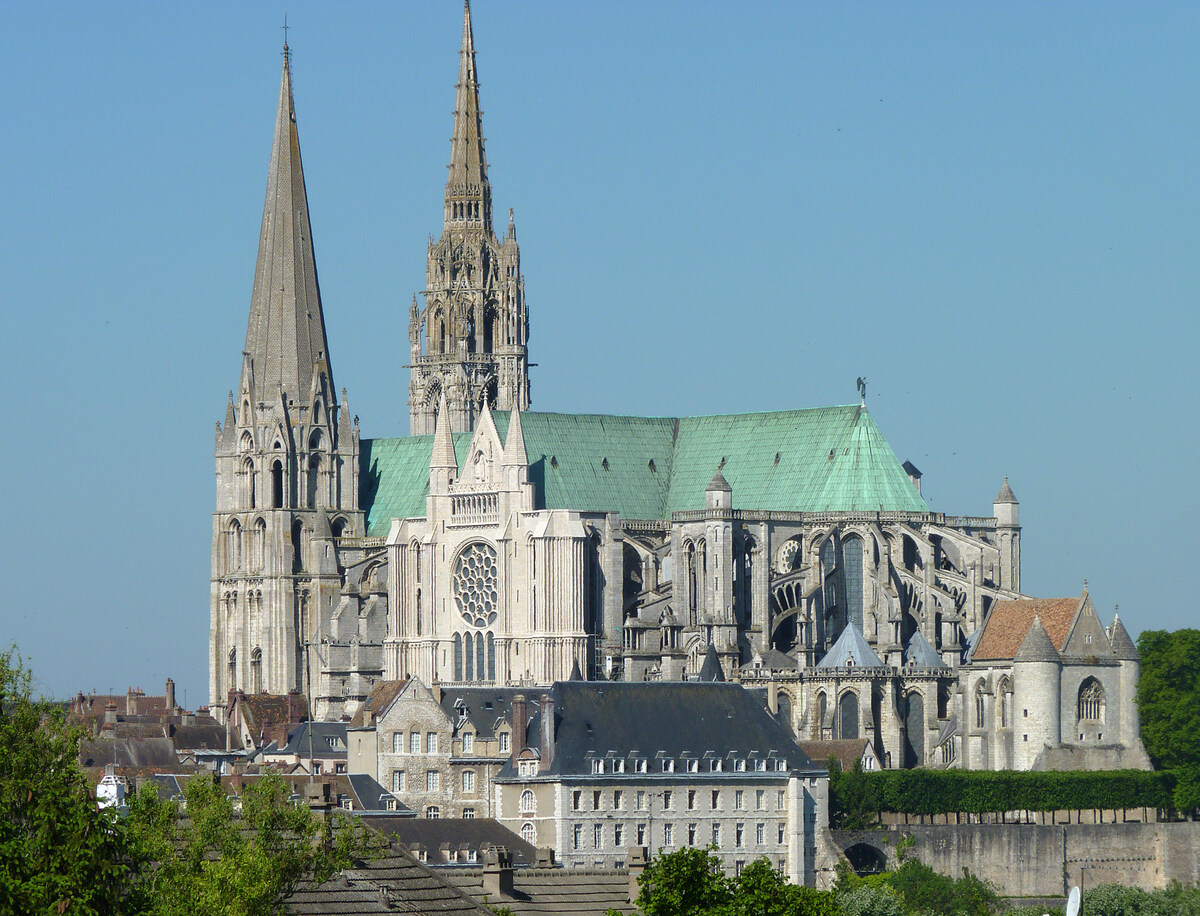
Rouen Cathedral
Normandy
Magnificent Gothic-Renaissance cathedral, one of the great architectural monuments of the world. Constructed in 1202 – 1880. The remarkable tower is 151 m tall and was the tallest structure in the world in 1876 – 1880. The church is 136.86 m long, with a 28 m high nave.
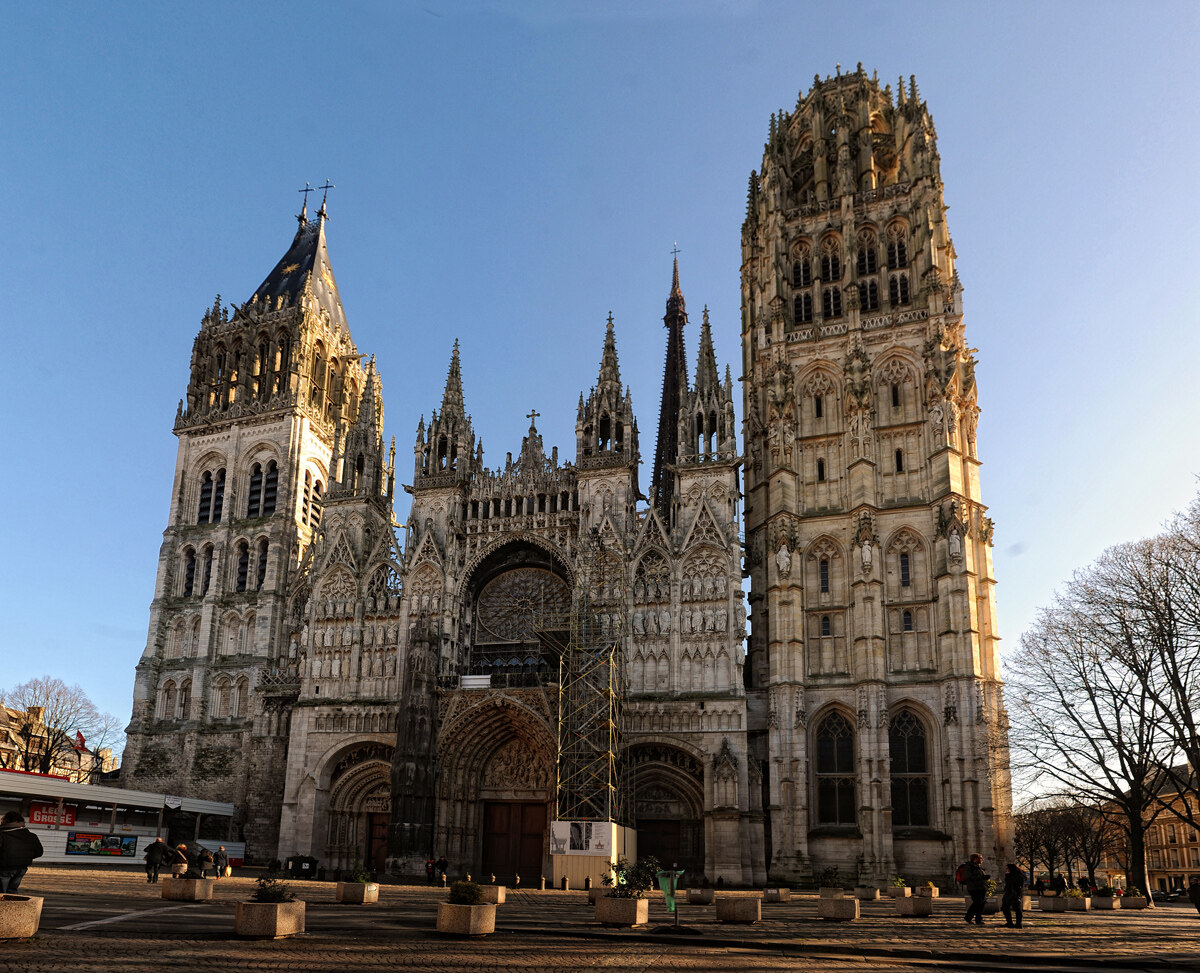
Sainte-Chapelle
Ile-de-France (Île-de-France)
A reliquary of the French monarchy, this outstanding Gothic building was built in 1239 – 1248. Contains a unique set of Gothic stained glass.
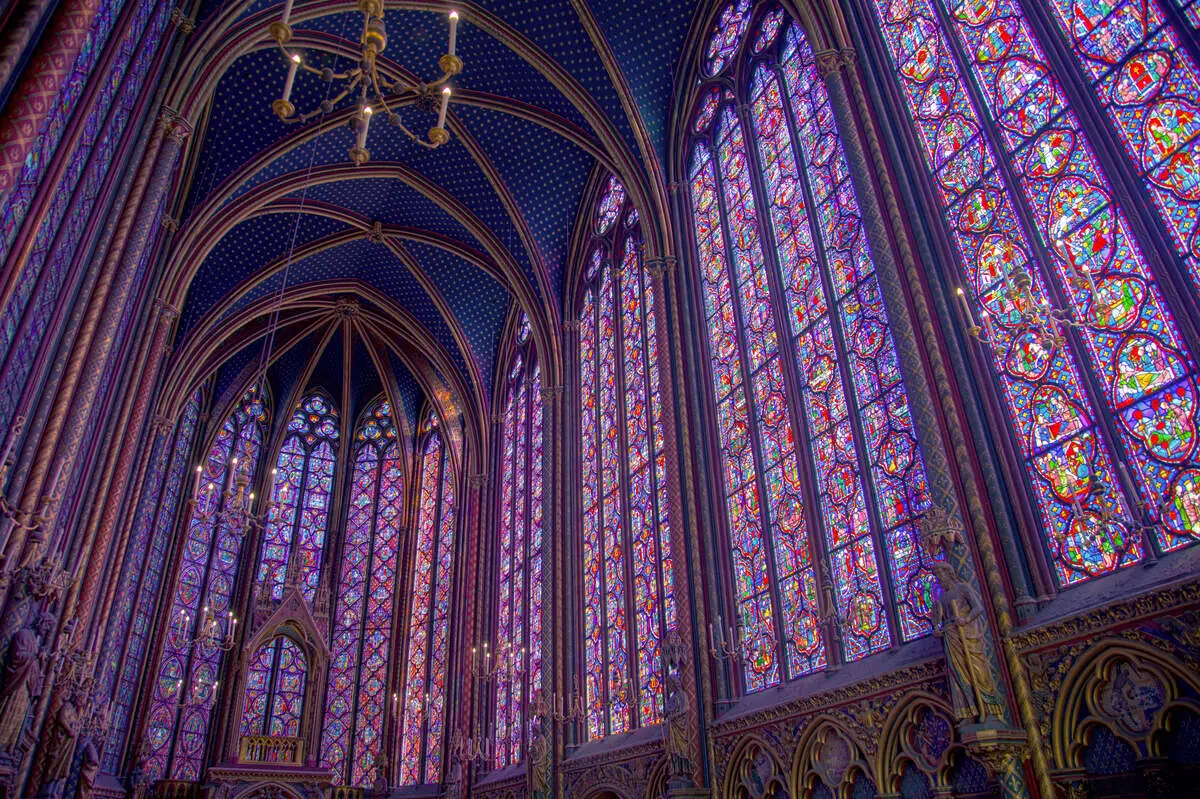
Catacombs of Paris
Ile-de-France (Île-de-France)
Former extensive Paris stone mines (approximately 400 km long network) since the late 18th century have been turned into underground cemeteries where are located remains of approximately 6 million people.
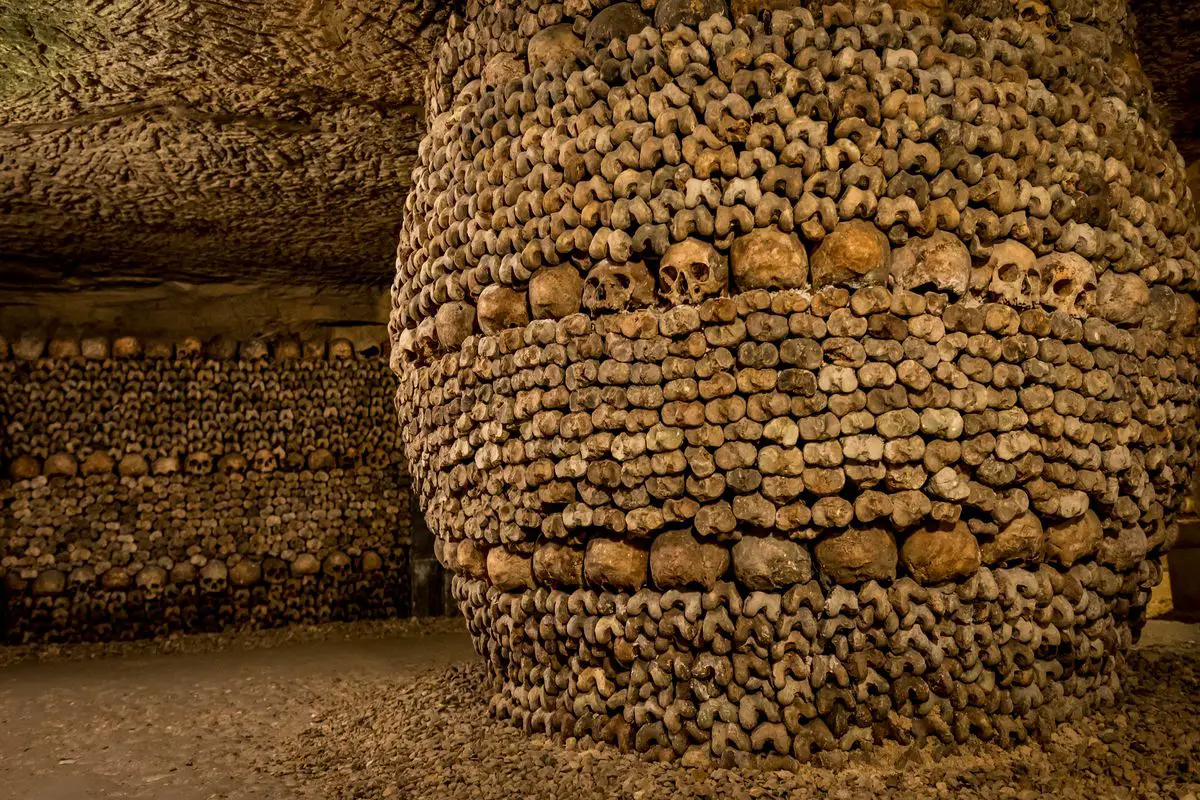
Saint-Malo
Brittany (Bretagne)
A medieval port city with walls. Saint-Malo developed as a city of well-organized privateers and seafarers making discoveries and settlements in distant areas of the world.
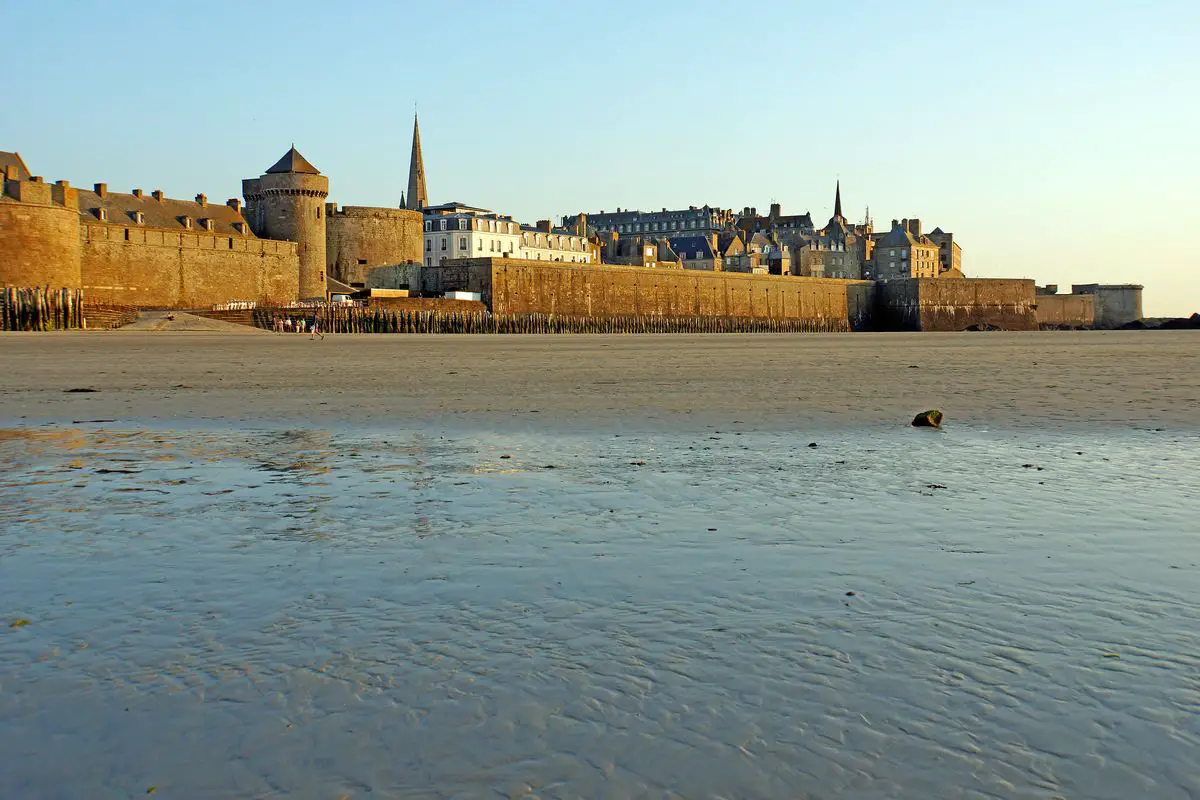
Reims Cathedral
Grand Est
One of the best examples of Gothic architecture, built at the end of the 13th century. The towers are 81 m tall, the interior hall is 138.75 m long. Excellent stained glass and sculptures. The original cathedral was here already in the 4th century AD. The kings of France were crowned here.
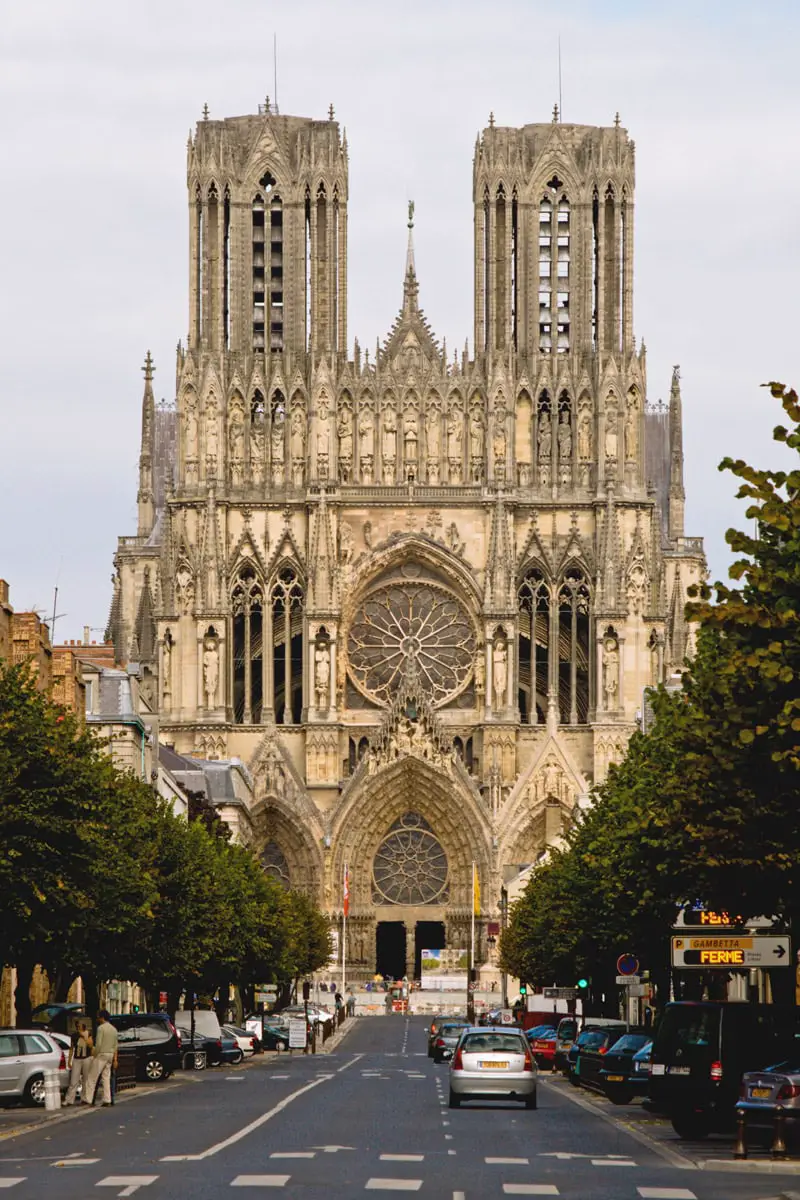
Gardens of Versailles
Ile-de-France (Île-de-France)
Possibly the finest example of French Garden design – a Baroque-style representation in landscape architecture. Includes a complicated hydraulics system. In the gardens are some 1,400 fountains and 300 statues.
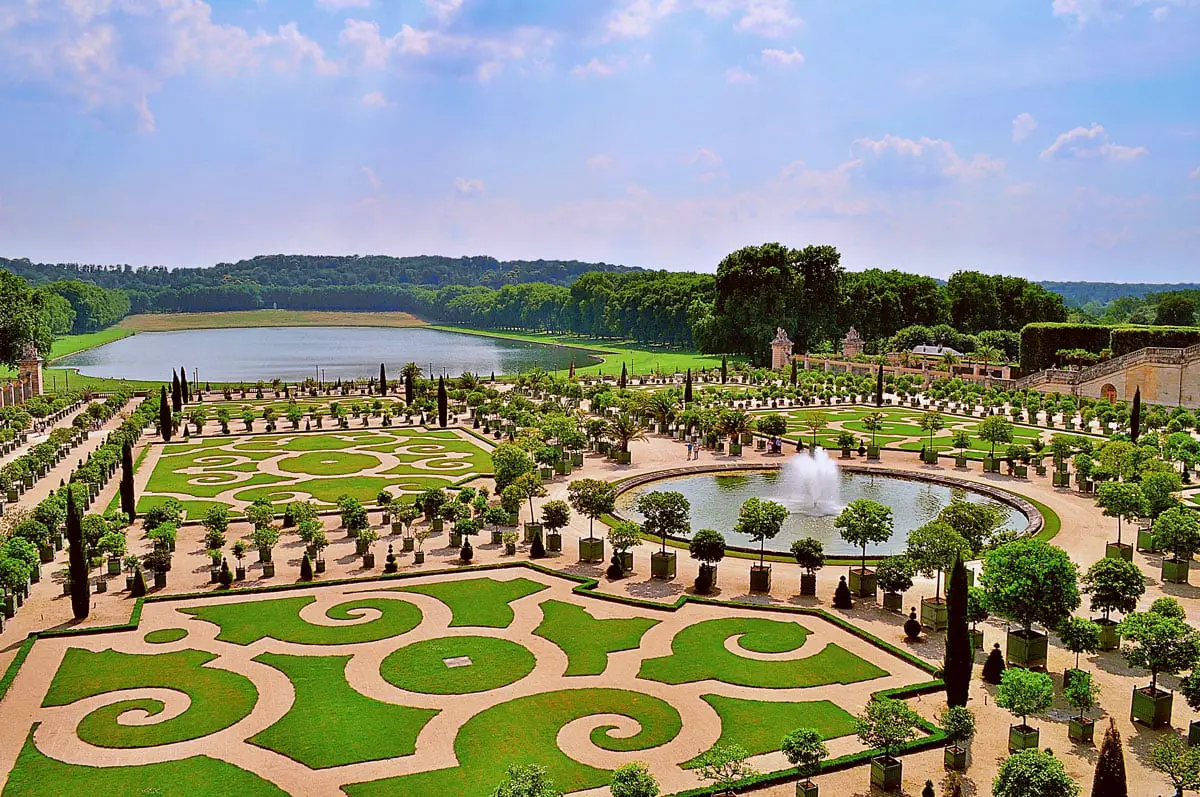
Aigues-Mortes
Provence-Alpes-Côte d’Azur
Fortified medieval town with very impressive, well-preserved walls. These 1,650 m long walls were built mostly in the 13th century.
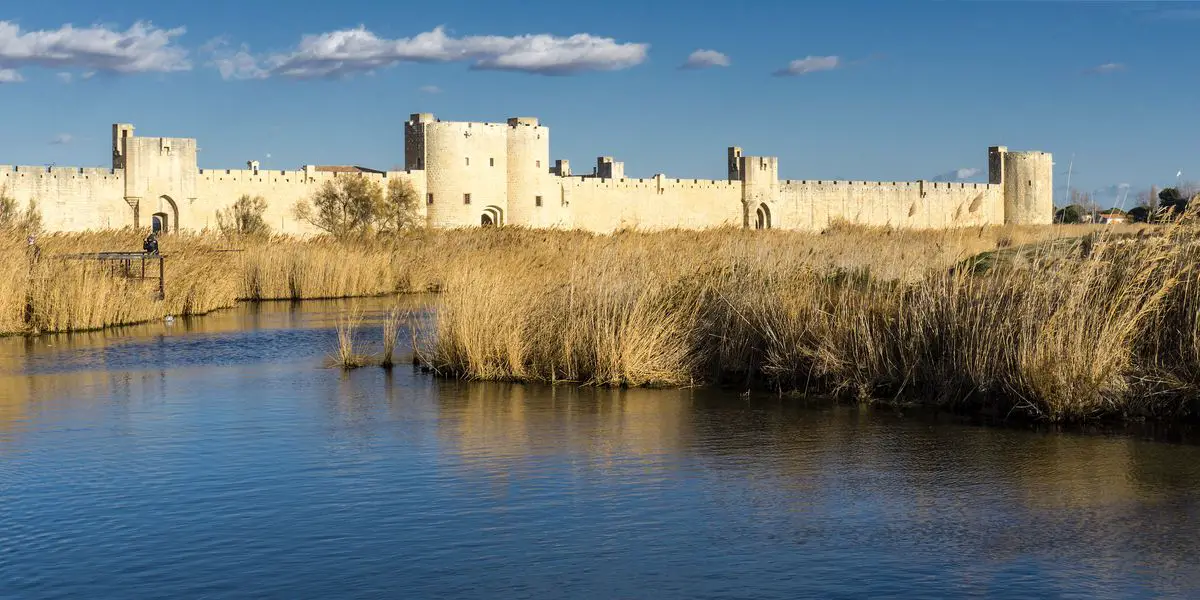
Basilica of St. Denis
Ile-de-France (Île-de-France)
One of the earliest true Gothic buildings in the world. Constructed in 1137 – 1141. Nave was rebuilt in 1231 – and this rebuilding was one of the first examples of the Flamboyant Gothic style. Built on the site of earlier cathedrals that have existed here since the 7th century AD. Burial site of most French monarchs from the 10th century to 1789.
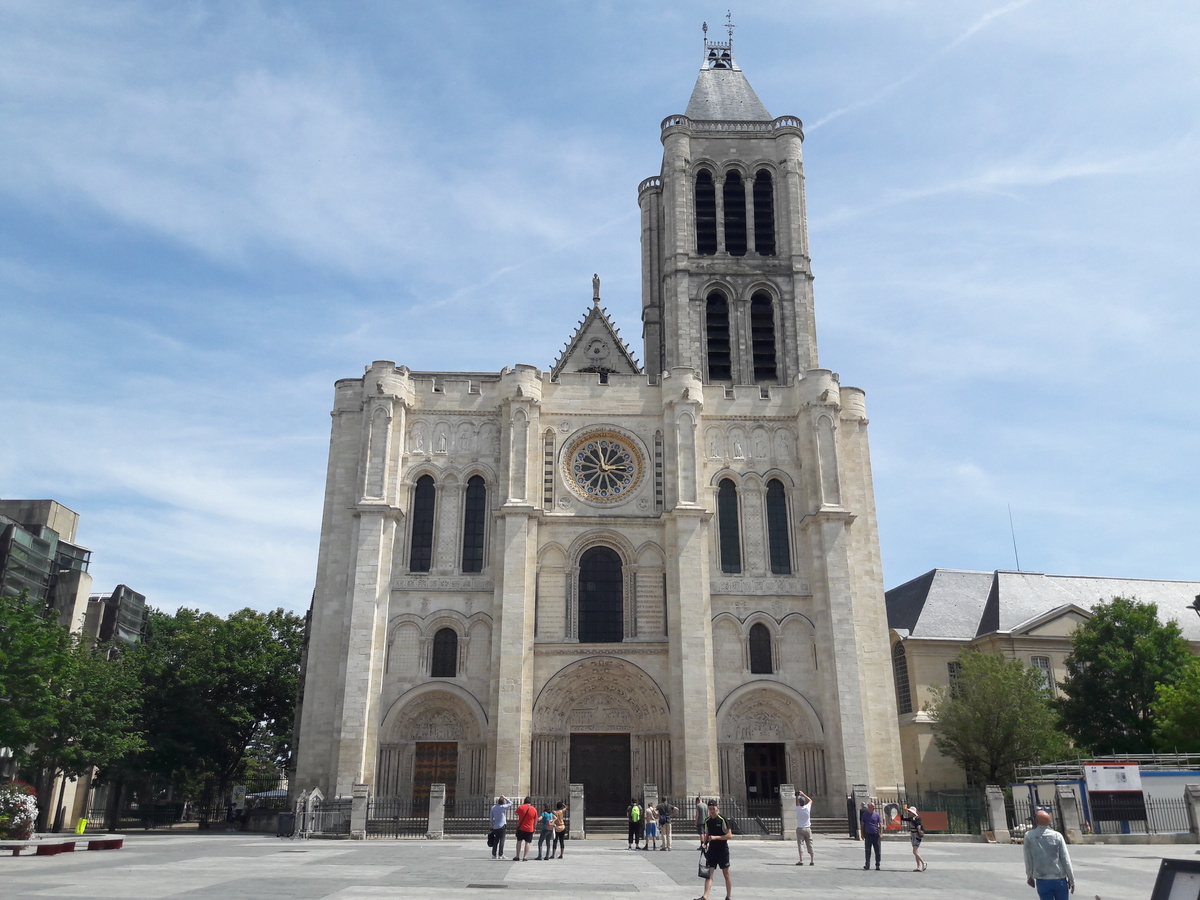
Château de Blois
Centre-Val de Loire
Large and exquisite Renaissance palace in the center of town. Consists of several buildings built in the 13th – 17th century. Palace has 564 rooms and 75 staircases. Contains Salle des Etats Généraux – the largest Gothic civilian interior remaining in France. The famous detail of the palace is the spiral staircase in the François I wing.
Strasbourg Cathedral
Grand Est
Gorgeous, giant Gothic cathedral. World’s tallest building in 1647 – 1874, with a 142 m tall spire. Started as a Romanesque building in 1015, completed in 1439. Very ornate portal. Stained glass windows were made mainly in the 14th century, but some are even from the 12th century. Very interesting is the enormous astronomical clock.
Vaux-le-Vicomte
Ile-de-France (Île-de-France)
Impressive Baroque palace, the most elaborate French palace from the middle of the 17th century. The predecessor of Versailles with its visual unity of the architecture of the palace and surrounding gardens.
Grand Palais
Ile-de-France (Île-de-France)
An enormous public building, built in Beaux Arts style in 1900. It presents both very rich ornamentation and amazing achievements in structural engineering.
Riquewihr
Grand Est
Gorgeous medieval village with a perfectly preserved ensemble of buildings and streets. Preserved medieval fortifications.
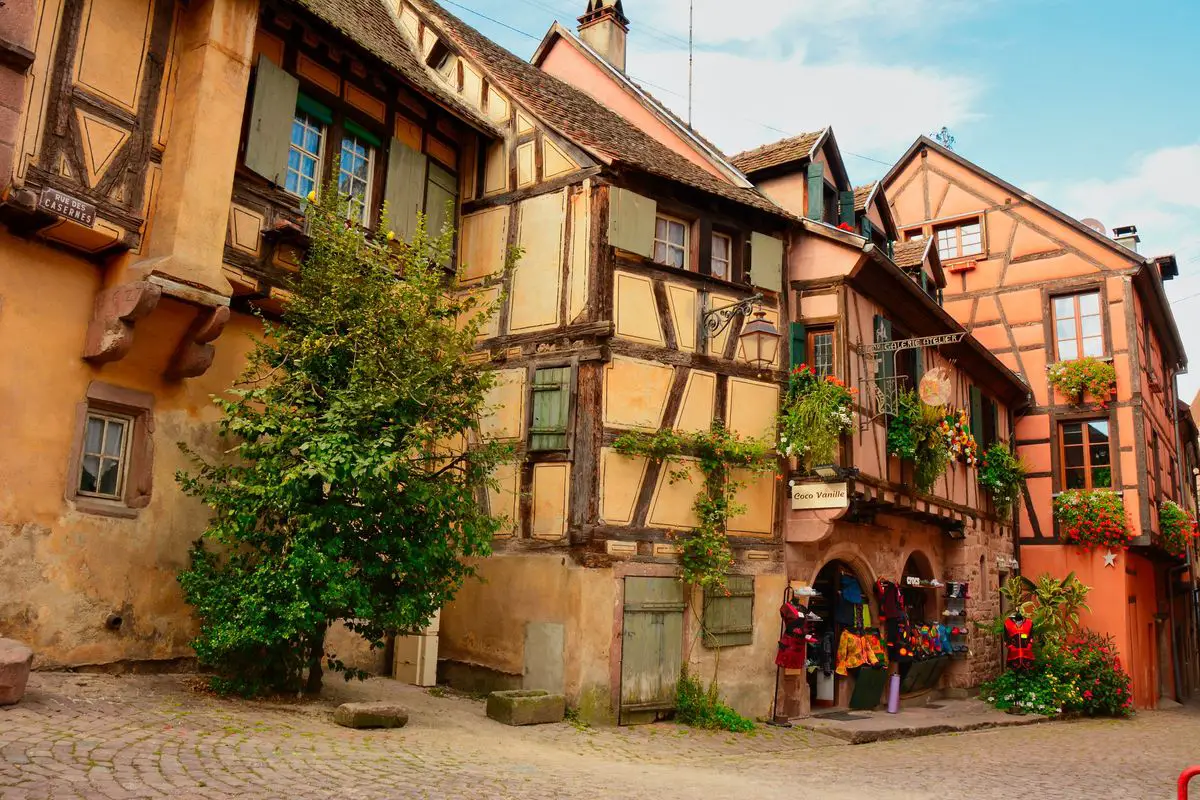
Lerins Abbey (Lérins Abbey)
Provence-Alpes-Côte d’Azur
A large, fortified Cistercian monastery on an island, active since the 5th century. It is one of the centers of development for Western European monasticism. The oldest buildings date from around 1073.
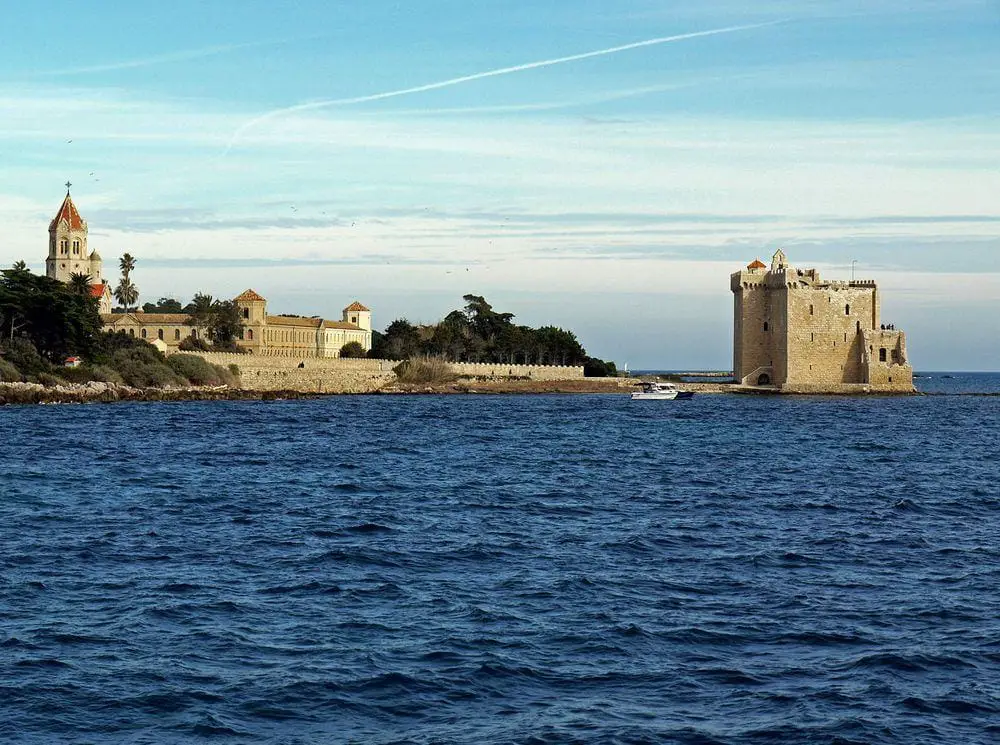
 Recommended books
Recommended books
Rick Steves France 2019
Wander the lavender fields of Provence, climb the Eiffel Tower, and bite into a perfect croissant: with Rick Steves on your side, France can be yours!
The Best Loved Villages of France
An insider’s tour of France’s most beloved and beautiful villages uncovers the country’s hidden treasures. The Best Loved Villages of France brings the reader on a tour of forty-four of the country’s most treasured destinations. Always picturesque, but often well-kept secrets, the book offers insight into village life and local history. Take a tour of a crumbling medieval fortress with the mayor of Lavardin or peruse the maritime objects found at sea by a mustached fisherman in Saint-Suliac.


